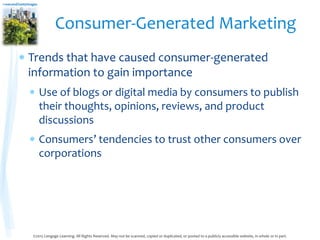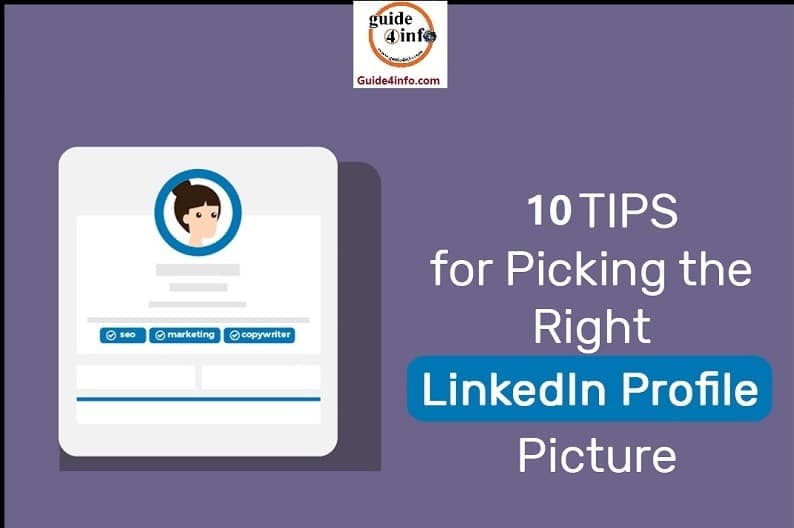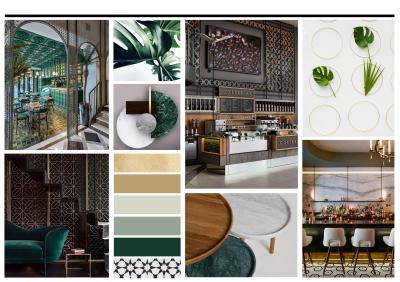Visual content is crucial for enhancing the appeal and effectiveness of your blog. Choosing the right images can significantly influence reader engagement and convey your message more powerfully. Getty Images offers a vast library of high-quality visuals that can elevate your blog’s aesthetic and informative value. Here are some tips to help you select the best Getty Images for your content.
Understanding the Importance of Visual Content in Blogging
 Visual content is essential in today’s fast-paced digital landscape, where attention spans are short. High-quality images can draw readers in, create emotional connections, and illustrate concepts that text alone may not convey effectively. When readers encounter visually appealing content, they are more likely to stay on the page longer, reducing bounce rates. Furthermore, images help break up large blocks of text, making your blog more readable and engaging. According to various studies, articles with images receive significantly more views, shares, and engagement than those without. Therefore, incorporating relevant and compelling visuals into your blog posts is not just an aesthetic choice but a strategic necessity.
Visual content is essential in today’s fast-paced digital landscape, where attention spans are short. High-quality images can draw readers in, create emotional connections, and illustrate concepts that text alone may not convey effectively. When readers encounter visually appealing content, they are more likely to stay on the page longer, reducing bounce rates. Furthermore, images help break up large blocks of text, making your blog more readable and engaging. According to various studies, articles with images receive significantly more views, shares, and engagement than those without. Therefore, incorporating relevant and compelling visuals into your blog posts is not just an aesthetic choice but a strategic necessity.
Why Choose Getty Images for Your Blog
 Getty Images stands out in the realm of stock photography for several reasons. First, it boasts an extensive library of high-quality images that cater to various niches, styles, and themes. Whether you’re looking for photos, illustrations, or video content, Getty Images provides a variety that can suit any blog’s tone and subject matter. Second, their search functionality allows for nuanced keyword searches, helping you find the exact images that align with your content. Additionally, Getty Images ensures that all visuals are sourced ethically, avoiding legal issues that can arise from improper use of images. Lastly, the professional quality of the images can greatly enhance your brand’s credibility, making your content more trustworthy and influential. By choosing Getty Images, you are investing in superior visuals that can elevate the overall quality and reach of your blog.
Getty Images stands out in the realm of stock photography for several reasons. First, it boasts an extensive library of high-quality images that cater to various niches, styles, and themes. Whether you’re looking for photos, illustrations, or video content, Getty Images provides a variety that can suit any blog’s tone and subject matter. Second, their search functionality allows for nuanced keyword searches, helping you find the exact images that align with your content. Additionally, Getty Images ensures that all visuals are sourced ethically, avoiding legal issues that can arise from improper use of images. Lastly, the professional quality of the images can greatly enhance your brand’s credibility, making your content more trustworthy and influential. By choosing Getty Images, you are investing in superior visuals that can elevate the overall quality and reach of your blog.
Identifying Your Blog’s Aesthetic and Theme
Before diving into the world of Getty Images, it’s essential to understand your blog’s aesthetic and theme. This ensures that the visuals you choose resonate with your content and appeal to your audience. Here are a few pointers to help you pinpoint your blog’s style:
- Know Your Audience: Consider who you’re writing for. Are they professionals, creatives, or casual readers? Your audience’s preferences can guide your image choices.
- Define Your Brand Colors: If you have a specific color palette or brand identity, stick to those colors when selecting images. This creates a cohesive look across your blog.
- Choose Your Vibe: Are you going for a modern, minimalist feel or something more vibrant and eclectic? Your choice of imagery should enhance this vibe.
- Consider Image Style: Think about whether you want illustrations, photographs, or a mix of both. Different styles can convey different messages.
Once you’ve got clarity on your blog’s aesthetic, start exploring Getty Images with these considerations in mind. Filter your image search by keywords that align with your theme, as this will help you find images that feel like a natural fit.
Searching Efficiently for Getty Images
Searching for the right Getty Images can be overwhelming, given the vast library available at your fingertips. However, with a few strategies, you can streamline the process and find the perfect visuals quickly:
- Use Specific Keywords: Instead of generic terms like “nature” or “business”, try more specific phrases that describe exactly what you want. For example, “sunset over the mountains” or “team brainstorming session” might yield better results.
- Utilize Filters: Take advantage of Getty’s filter options. Narrow your search by image type (photos, illustrations), orientation (landscape, portrait), and even color filters that match your blog’s aesthetic.
- Save Searches: If you find yourself repeatedly searching for similar themes, consider saving your search queries. This feature can save you time on future image hunts.
- Explore Collections: Getty often curates collections around themes or trends. Browsing through these can provide inspiration and help find images that are not just relevant but also trending.
By implementing these strategies, you’ll not only enhance your ability to find the right images but also ensure that they align smoothly with your blog’s aesthetic and audience’s expectations!
Evaluating Image Quality and Relevance
When it comes to selecting images from Getty for your blog, image quality and relevance are key factors that can make or break your post. High-quality images capture attention, while relevant images enhance your content’s message. Here are some tips to help you evaluate both:
- Resolution Matters: Ensure that images are of high resolution (ideally 300 DPI for print and 72 DPI for web). Low-quality images can appear pixelated, diminishing your blog’s professionalism.
- Composition Check: Look for images with strong composition. A well-framed shot can draw readers’ eyes and keep them engaged with your content.
- Focus on Relevance: Every image should support the narrative or topic you are discussing. For example, if you’re writing about travel, choose images that evoke the spirit of adventure or the specific locations you mention.
- Emotional Appeal: Consider the emotional reaction an image can invoke. Images that resonate emotionally with your audience will likely help convey your message more effectively.
Lastly, don’t forget to assess the visual style of the images you choose. If your blog has a specific aesthetic, make sure your images match that vibe to create a cohesive look across your site.
Licensing Options and Usage Rights Explained
Navigating licensing options and usage rights can be a bit confusing, but it’s crucial for using Getty Images correctly and legally. Here’s a breakdown of the most common licensing types you’ll encounter:
| Type of License | Description |
|---|---|
| Royalty-Free License | Allows you to use the image multiple times without paying each time, but often still comes with restrictions about usage and distribution. |
| Rights Managed License | You pay based on how you intend to use the image (e.g., duration, location, and media). This type can be more expensive but gives you control over the image’s use. |
| Editorial Use License | Images can be used for news reporting, blogs, or articles where the content is factual rather than promotional. These images typically cannot be used for advertisements. |
Before selecting an image, always check the specific licensing agreement and usage rights tied to it. Violating these agreements can lead to legal issues and financial penalties, which is something no blogger wants to deal with!
Best Practices for Image Placement in Your Posts
Choosing the right images is only half the battle; how you place them in your blog posts can significantly impact reader engagement and SEO. Here are some best practices to keep in mind:
- Above the Fold: Place at least one powerful image at the top of your post. This grabs attention and gives readers a reason to stay.
- Break Up Text: Use images strategically throughout your content to break up long paragraphs. This makes your posts more visually appealing and easier to digest.
- Relevant Placement: Ensure the image directly relates to the content surrounding it. This creates a cohesive experience for the reader and reinforces your message.
- Use Captions: Don’t underestimate the power of a good caption. Use them to provide context, promote engagement, or highlight key information. It can also aid SEO!
- Responsive Design: Always consider how images will appear on different devices. Ensure they are responsive so they look good on both desktop and mobile views.
- Testing: Experiment with different image placements. Use A/B testing to see what works best for your audience. Are they responding better to images placed at the top or integrated within the text?
By implementing these best practices, you can enhance the visual appeal of your posts while keeping your readers engaged. Effective image placement is a small change that can lead to big results!
Optimizing Getty Images for SEO
Using Getty Images can elevate your content, but if you want to maximize their impact, optimizing them for search engines is crucial. Here’s how you can do it:
- File Names: Rename image files with descriptive, keyword-rich titles before uploading. Instead of “image123.jpg,” use “colorful-sunset-over-ocean.jpg.” This helps search engines understand what the image is about.
- Alt Text: Add alt text for every image. This is essential for accessibility and improves SEO. Describe what’s in the image and include relevant keywords but keep it natural and concise.
- Image Size: Optimize image size without sacrificing quality. Large images can slow down your site, negatively impacting SEO. Aim for a balance where the image looks good but loads quickly.
- Structured Data: If applicable, implement structured data for images. This can help search engines understand your content better and may improve visibility in search results.
- Contextual Relevance: Surround images with relevant, keyword-rich text. Search engines assess the context in which images appear, so integrating them with relevant content is beneficial.
- Use sitemaps: Including images in your XML sitemap helps ensure that search engines discover and index every image you use. Don’t miss this step!
By following these optimization strategies, you not only enhance the visibility of your images but also boost your entire blog post’s SEO performance. The right images combined with solid SEO practices can drive more traffic and improve user experience!
Updating Your Blog with Fresh Visual Content
Keeping your blog visually engaging is essential for retaining your audience’s attention. One of the best ways to achieve this is by frequently updating your visual content. Here are some tips on updating your blog with fresh Getty Images:
- Seasonal Updates: Consider changing your images with the seasons or during holidays to keep the content relevant. For example, use cozy, warm visuals during fall and vibrant, sunny images for summer.
- Trending Topics: If there’s a trending topic in your niche, don’t hesitate to find fresh images that relate to it. This keeps your blog current and in the conversation.
- New Blog Posts: Whenever you write a new post, pair it with unique and fresh images. This not only enhances the post but also boosts its shareability.
- A/B Testing: Try rotating images in popular posts to see which visuals resonate better with your audience. This can provide insights into your audience’s preferences.
- High-Quality Over Quantity: It’s tempting to flood your blog with imagery, but opt for quality over quantity. A few striking images can be more impactful than numerous mediocre ones.
Incorporating fresh visuals ensures that your blog remains dynamic and inviting. Getty Images offers a rich database that allows you to constantly refresh your selections and keep your readers engaged.
Conclusion and Final Tips for Selecting Images
Choosing the right images for your blog can greatly influence your content’s effectiveness. Here’s a quick recap of essential tips you should keep in mind:
- Understand Your Audience: Choose images that speak to your target demographic. Consider their preferences and the emotions you want to evoke.
- Maintain Consistency: Ensure that the style of the images aligns with your brand. Consistency strengthens your blog’s identity.
- Use Licensing Wisely: Always consider the licensing of the images. Files from Getty Images often come with clear guidelines, so be aware and compliant to avoid legal issues.
- Optimize for SEO: Don’t forget to name your image files descriptively and use alt-text. This enhances accessibility and can improve your search visibility.
- Stay Authentic: Opt for images that feel genuine and relatable. Avoid overly staged or unrealistic visuals, as they can clash with your message.
In conclusion, selecting the right images is not just about aesthetics; it’s about enhancing the reader’s experience and reinforcing your message. Take the time to curate visuals that reflect quality and relevance, and you’ll see a positive impact on your blog’s success!


